Climate Resilience
Climate Resilience
Climate change has brought about environmental crises and impacted to business and industry. SCGP remains firmly committed to its 2050 Net Zero emission goal by prioritizing clean energy sourcing to substitute fossil fuels, develop energy efficiency technology, reduce GHG emissions while implementing climate resilience strategy align with the Science Based Target to ensure meeting the target on the principle of public-private sector collaboration for monitoring and evaluation of possible risks.
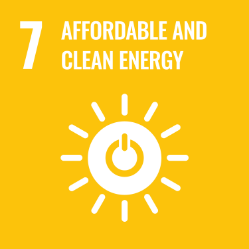
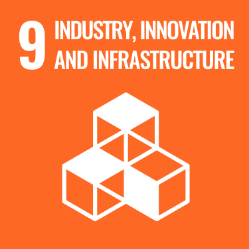
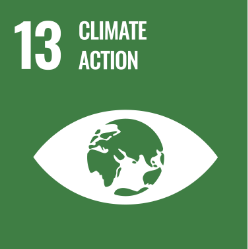
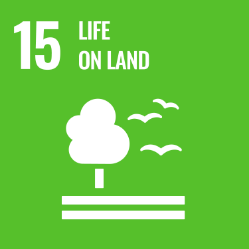
Risks
Opportunity
Management Strategies
- Improving energy efficiency through the adoption of best available technologies.
- Increasing the use of renewable energy and clean energy sources.
- Developing low-carbon products based on circular economy principles.
- Exploring Carbon Capture, Utilization, and Storage (CCUS) technologies.
- Supporting and participating in forest conservation and ecosystem restoration for biodiversity and as carbon dioxide sinks.
Net Zero Pathway (GHG scope1+2)

In 2021, SCGP revised its base year GHG emission to include abroad operation facilities of 2.07 million tonCO2e resulting the total GHG emission of both Thailand and abroad to be 4.99 million tonCO2e
In 2023, SCGP set a new target to increase its greenhouse gas emissions reduction from 20% to 25% by 2030 compared to the base year of 2020 (4.99 million tons CO2e) and aims to achieve Net-Zero greenhouse gas emissions by reducing 100% of GHG scope1 and scope2 by 2050
Strategy
By using the best available technologies
By increasing the share of biomass and renewable energy
By innovating the low - carbon products based on the principles of circular economy across value chain
By networking with national and international to scale up carbon capture, utilization and storage (CCUS) technologies
By collaborating with communities and authorities for reforestation and rehabilitation as carbon sink
By Internal Carbon Pricing : ICP to enhance greenhouse gas emissions reduction within the organization.
on energy conservation and climate resilience among employees and contractors.
GHG Roadmap

- Announced Sustainability Goals.
- Achieved the goal of GHG Emission Reduction 12.8% from the reduction target of 10% compared with Business as usual (BAU) at the base year of 2007

- Announced Targets
- Net Zero by 2050
- Reduce greenhouse gas emission 25% compared with the base year of 2020 both Thailand and abroad at the base year of 2007
- Set Internal Carbon Pricing: ICP
- Task Force on Climate - RelatedFinancial Disclosure(TCFD)

- Increase to use of renewable energy to 24.3%
- Report on greenhouse gas emissions scope 3.
- Joined the Thailand Carbon Neutral Network (TCNN) as a Climate Action Leading Organization

- Achieve the goal of :
- Energy consumption reduction 13% by 2025 compared with base year 2007
- Greenhouse gas emission reduction 25% compared with base year of 2020 both Thailand and abroad
- Using biomass fuel and natural gas-boiler technology to generate electricity
- Improving :
- Biomass quality by adopting Torrefaction Technology
- Improve energy efficiency by expanding the installation of Turbo blowers at a Paper machine

- Increase the proportion of renewable energy use by more than 80%

- Achieve Net Zero
- Carbon offset by
- Natural Climate Solution: NCS
- Carbon Capture, Utilization and Storage: CCUS
Target
by
by 2030 Compared with the base year 2020 both Thailand and abroad
by 2025 Compared with Business as usual(BAU) at the base year of 2007
2023 Performance
(GHG emissions scope 1 and 2)
GHG Performance
Total GHG emissions
GHG emissions Scope 1
GHG emissions Scope 2 (Market-based vs Location-based)
Total GHG emission Intensity (Scope1 and 2)
GHG emissions Scope 3 (Covering 15 categories)
Note :
- In 2022, the data is collected from Thailand companies and estimate to abroad companies
- In 2023, the data is collected from Thailand and abroad companies and increased category 2, 5 and 10. The data in the table includes category 2, which was be calculated and added data from SCGP sustainability Report 2023
Energy Consumption Performance
Energy Consumption
Energy Consumption Intensity
Non Renewable Energy Consumption
Renewable Energy Consumption
Electricity consumption
Alternative Fuel
Renewable Energy
Note:
- Data of 2019, only Thailand operation performance
- In 2020, began to include GHG emissions and Energy consumptions performance of Thailand and abroad companies
Highlight Activities
Enhancing Energy Efficiency
- Soot Blower Optimization: SCGP improved the efficiency of Boiler Soot Blower system in 5 plants in Thailand. This was achieved by calculating the optimal frequency and duration for using high-pressure steam to clean ash and soot accumulated on the walls of boiler tubes.
- Improving Boiler Feedwater Efficiency: SCGP installed an automated control system, changed the size of the water pumps, improved piping, and optimized water pump operation to reduce heat loss at various points in the system.
- Enhancing Energy Efficiency in Paper Production Machinery: Siam Kraft Industry Co., Ltd (Ban Pong plant) installed a new conical pulp refiner to replace the 3 older machines. The newly installed machine has improved energy efficiency. Additionally, the plant extended the pipeline from the Central Air Compressor System (CACs) to the paper machines and improved the CACs control system.
- Expanding the turbo vacuum pump project: PT Fajar Surya Wisesa Tbk has expanded the installation machines with new technology instead of the old system at 3 paper machines to increase efficiency the water extraction system from the paper.
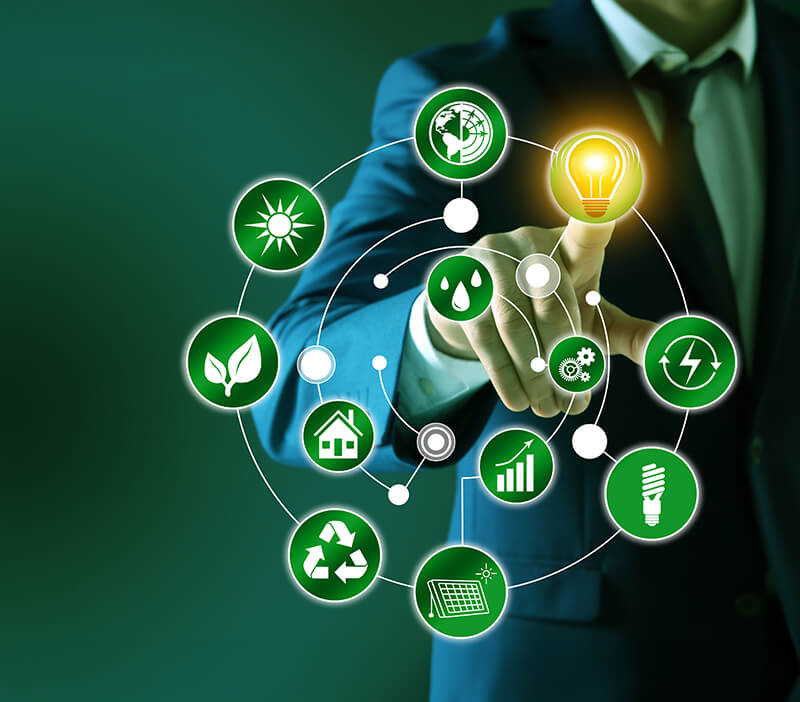
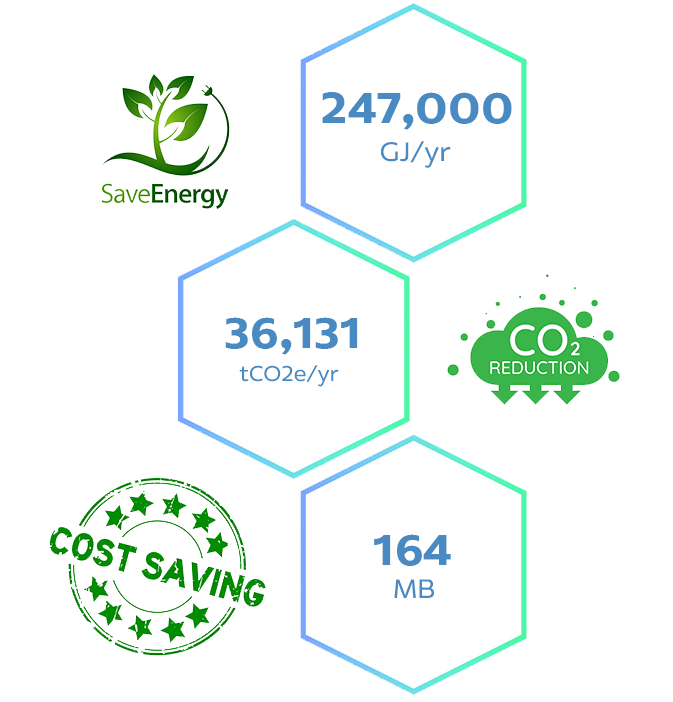
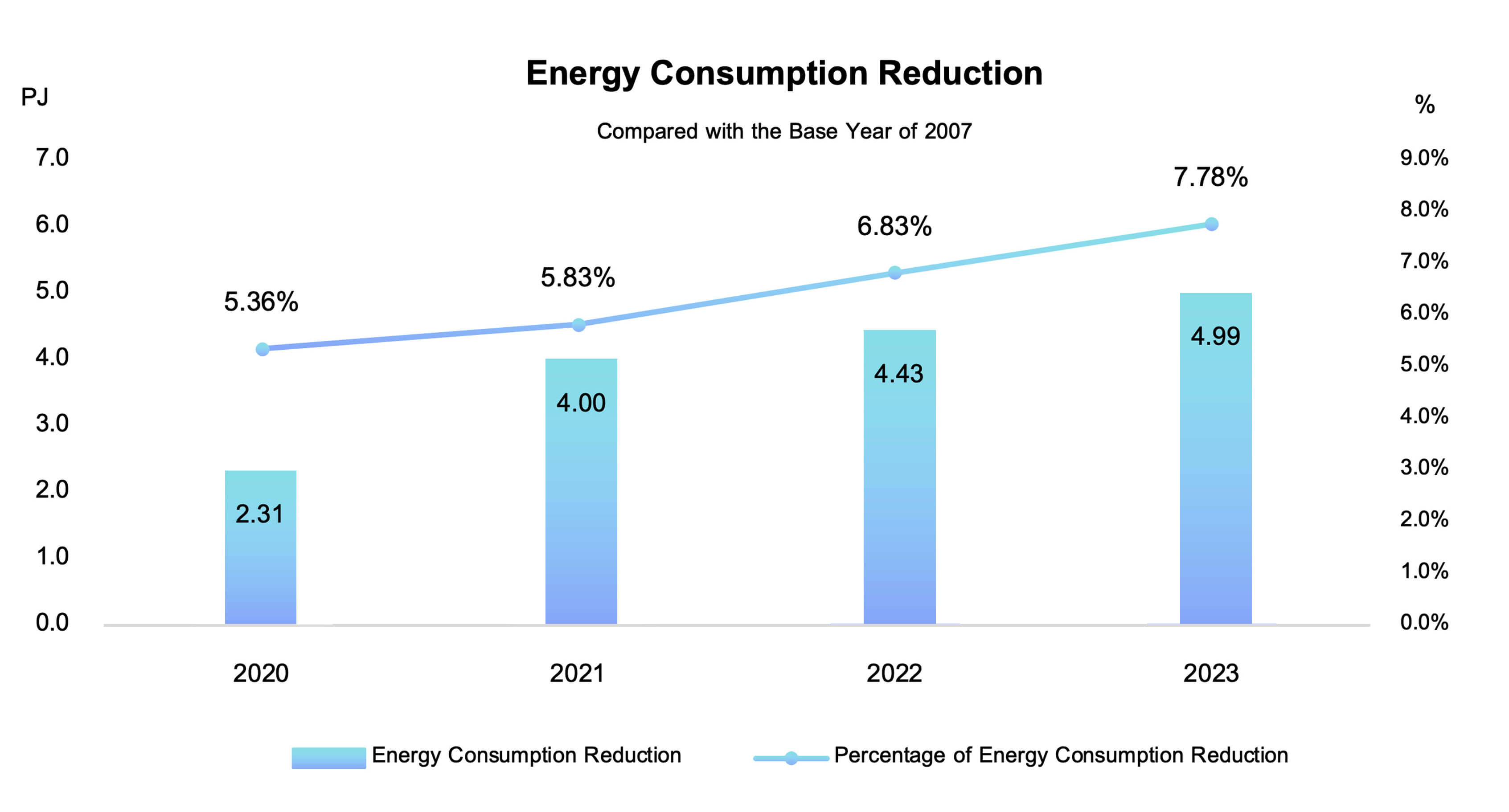
Increasing Renewable Energy Usage
Since 2018, SCGP has installed a total of 49.5 megawatts peak of solar energy. In 2023, the expansion included installations in Thailand and abroad, adding up to 9.7 megawatts peak, which helped reduce greenhouse gases by 9,228 tons of carbon dioxide equivalent per year
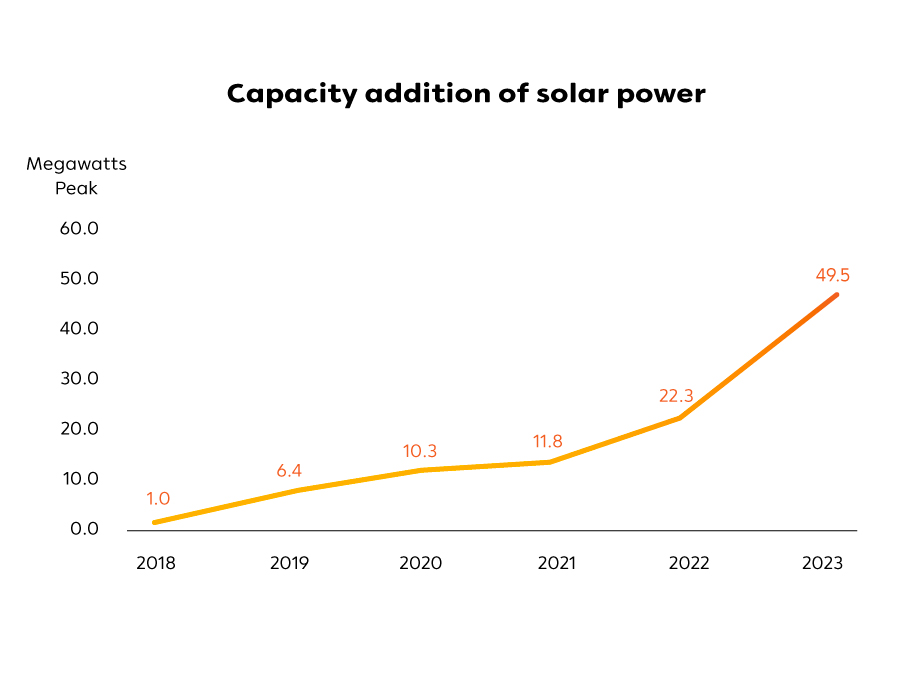
Increasing Biomass usage
SCGP aims to increase biomass fuel use by exploring and experimenting with new alternative fuels, such as cashew husks. This also includes improvements in boiler systems for greater use of biomass fuel and continuous fuel feeding. The use of biomass energy ratio increased from 8.4% to 12.8%, reducing greenhouse gas emissions by 696,275 tons of carbon dioxide equivalent per year.
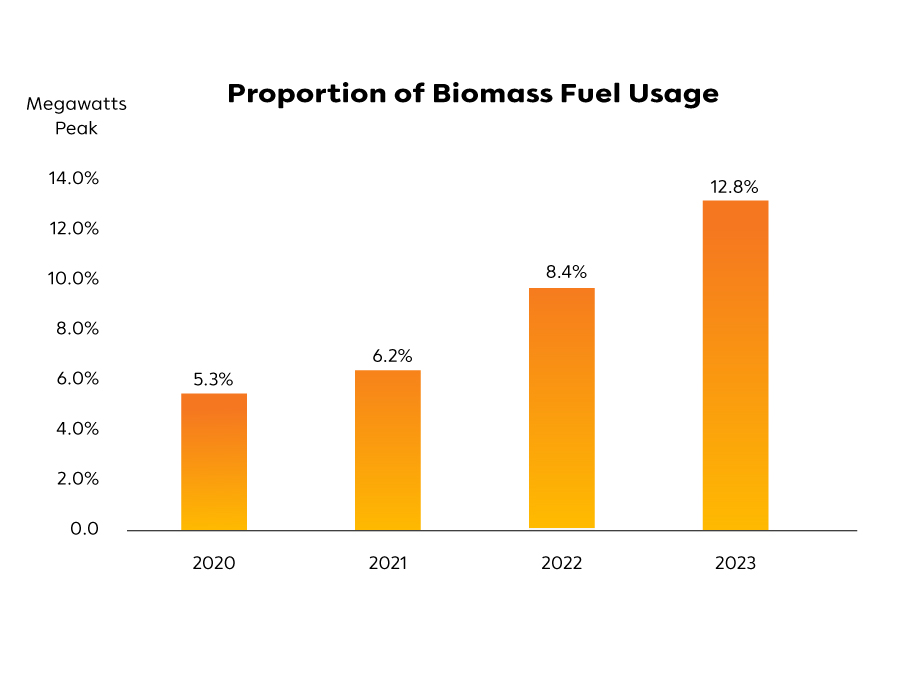
Expand Biogas project
Installation of anaerobic wastewater treatment systems in Paper Packaging manufacturing plants in Thailand and the Philippines has been added. This captures methane generated from the decomposition of organic matter in the wastewater treatment process, using it as a substitute for fossil fuels in Power boiler. This reduces greenhouse gas emissions by 13,759 tons of carbon dioxide equivalent per year and saves 17.16 million baht annually in fossil fuel costs.
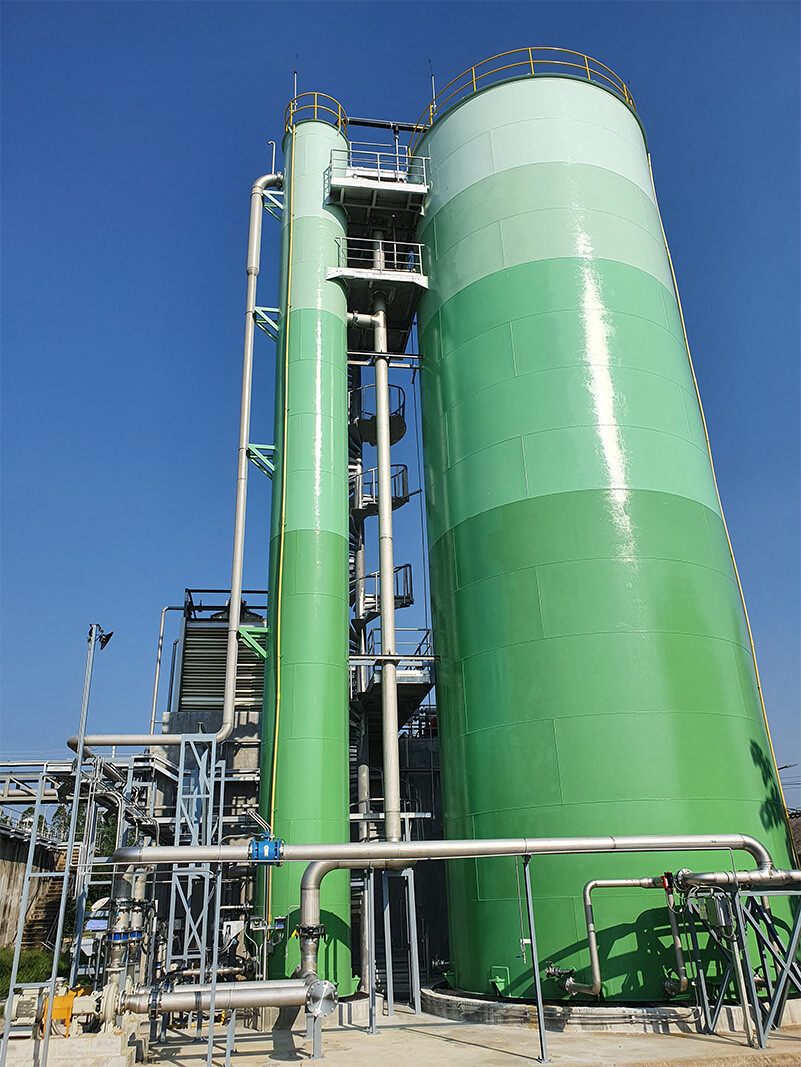
Planting 2.28 Million Trees
SCGP, in collaboration with government agencies and communities, has continuously planted trees since 2020. In 2023, 1,154,609 trees were planted, bringing the total to 2,283,284 trees. The "SCGP Plant the Trees to Beat the Heat“ project alone contributed 62,549 trees.
Carbon Storage Certification
Siam Forestry Co., Ltd. collected data and was certified for carbon sequestration of 31,770 rais of economic tree plantation, amounting to 152,181 tons of carbon dioxide equivalent per year, certified by SGS (Thailand) Limited.
Internal Carbon Pricing
SCGP sets an internal carbon price for the years 2022-2024 with a maximum value of 25 US dollars per ton of carbon dioxide equivalent, an increase from the previous year's rate of 18 US dollars, in order to accelerate support for various projects.
Currently, 12 projects have been supported by ICP, with a total investment of THB 779 million. It is expected that these projects will help reduce greenhouse gas emissions by a total of 81,500 tons of carbon dioxide equivalent per year.
SCGP places importance on developing employees to be aware of energy saving through continuous training and sharing best practice such as
- New available & Renewable energy technology focus on updating current technology and integrating renewable technology to seek opportunities for reducing the carbon footprint
- Operation excellence as focus on current energy utility processes (Boilers, Steam turbines, etc.-) aims to achieve the highest operational efficiency to minimize energy losses.
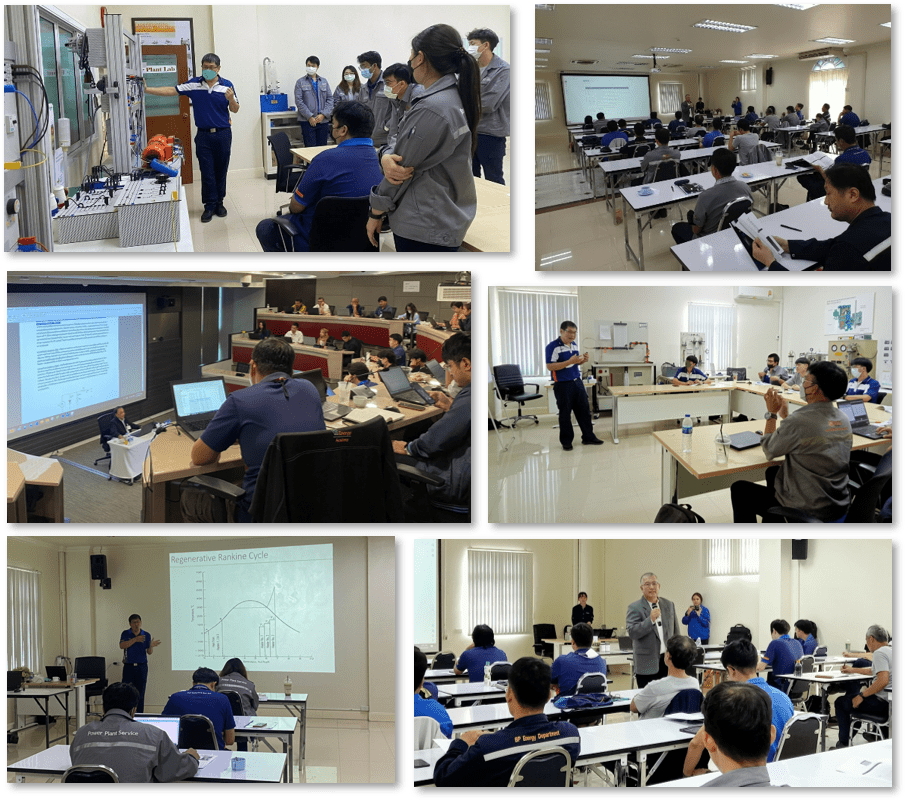
However
SCGP received 2 rewards from Operational Excellence programs by SCG as
- Gold Awards
Project: VKPC Reduce GHG 31% from base year 2020
modified boiler to increasing biomass utilization > 40% by heat. This project can reduce GHG emission by 31.85% and saving 40 MB from replacing fossil fuel by biomass, can leverage this idea to other plants for increase supply volume and supply source. - Silver Awards
Project: RMC Steam Reduction Platform
Monitoring and control performance operate as a real time. That can save steam consumption 110,000 ton steam/year, reduce GHG emission 30,000 tCO2/yr and saving 130 MB/yr
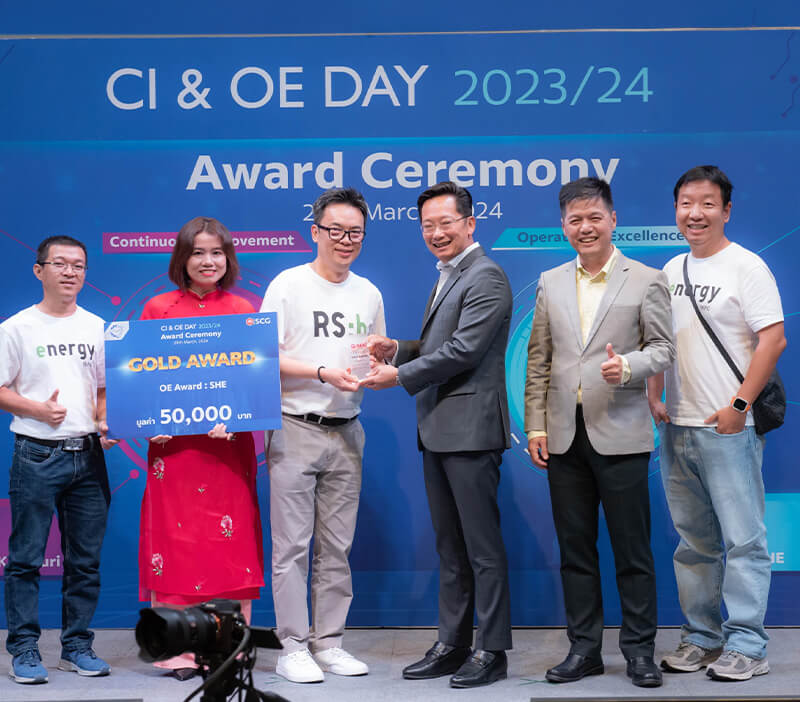

Thailand has developed the Sustainable Taxonomy Framework (Thailand Taxonomy) with the objective of categorizing environmentally friendly activities. It focuses on reducing the disparities in the capabilities of different sectors in transitioning towards environmental sustainability. The primary objective is to mitigate climate change, and the framework considers transparent conditions and indicators that align with the initial status and adaptability of businesses in Thailand.
Thailand Taxonomy Phase 1 was announced in June 2023 and focuses on the economic activities to achieve the climate change mitigation objectives. especially in the energy and transportation sectors. Phase 2 expected announce by 2025 and will be focused on the Manufacturing sector, Agriculture sector, Real estate and Construction sector and Waste Management sector.
However, SCGP voluntarily maps our activities using its definition screening criteria for eligibility and alignment with the EU Taxonomy at the activity level before Thailand announced full implementation.
SCGP has disclosed information through the Carbon Disclosure Project (CDP), an organization that assesses and reports data related to climate change, water management, and forest management. We believes that such disclosure of information supports the development and improvement of sustainable operational processes and helps organizations meet the needs of stakeholders. Additionally, it promotes transparency in the organization's operations.
